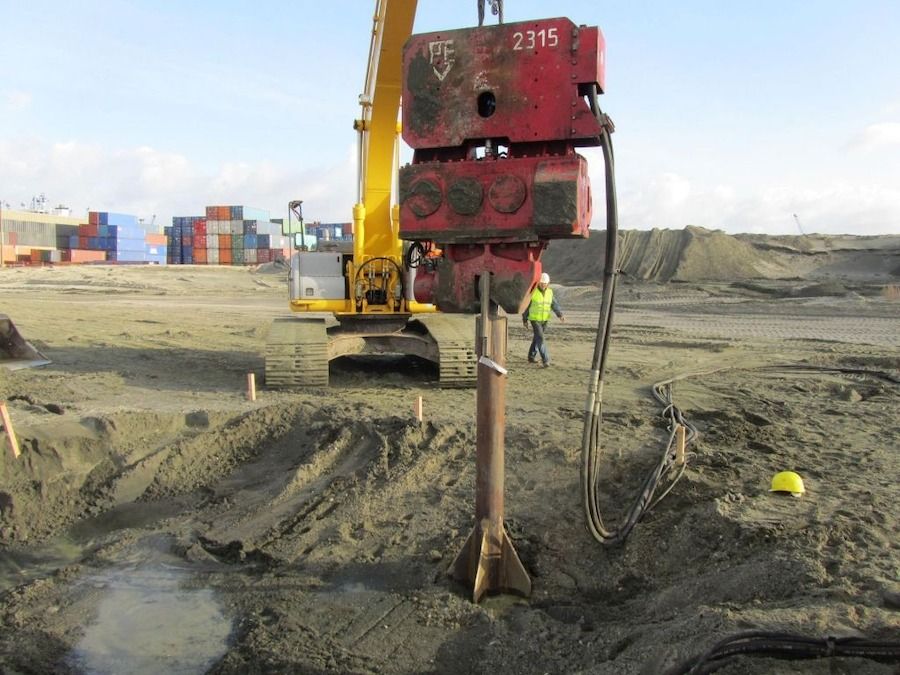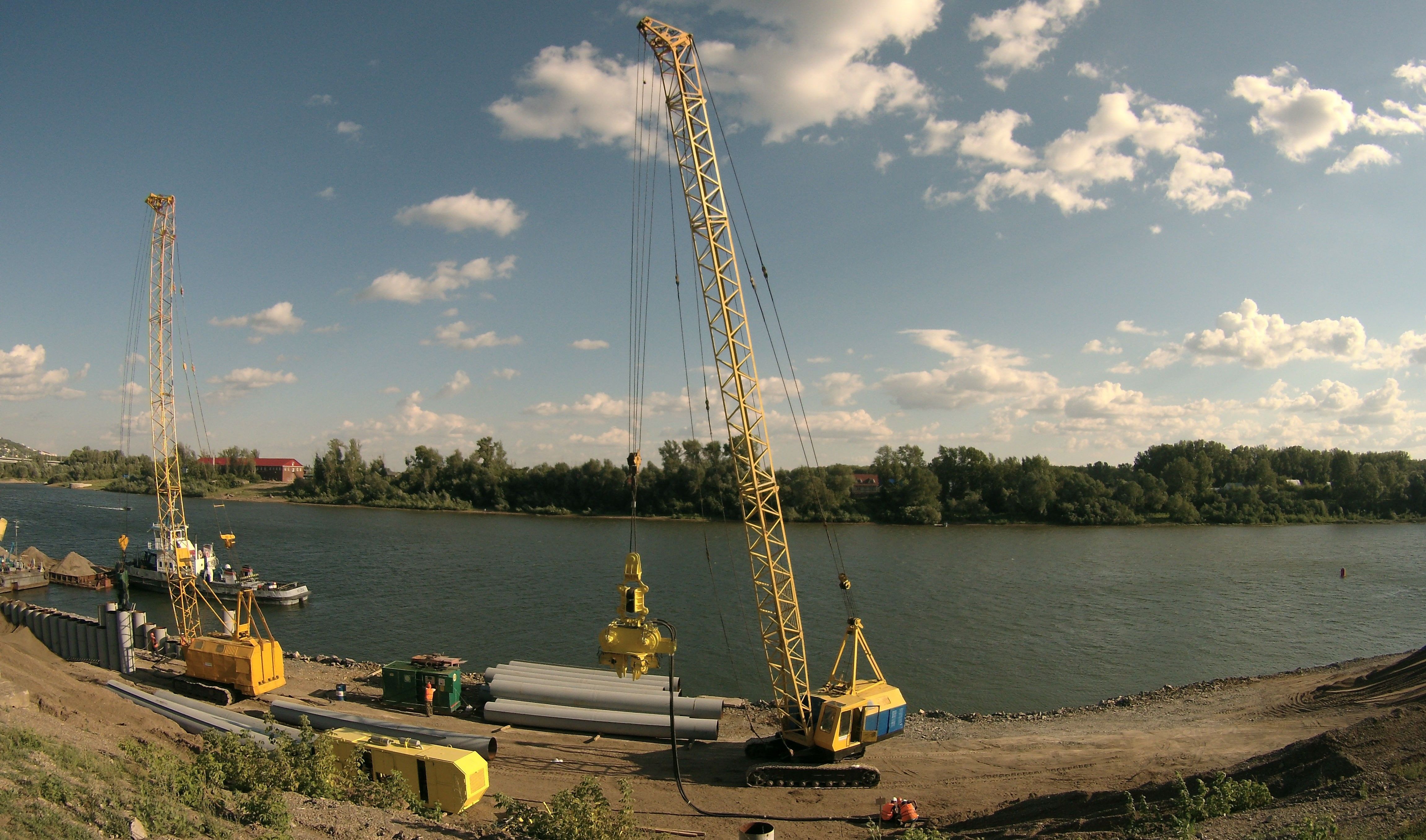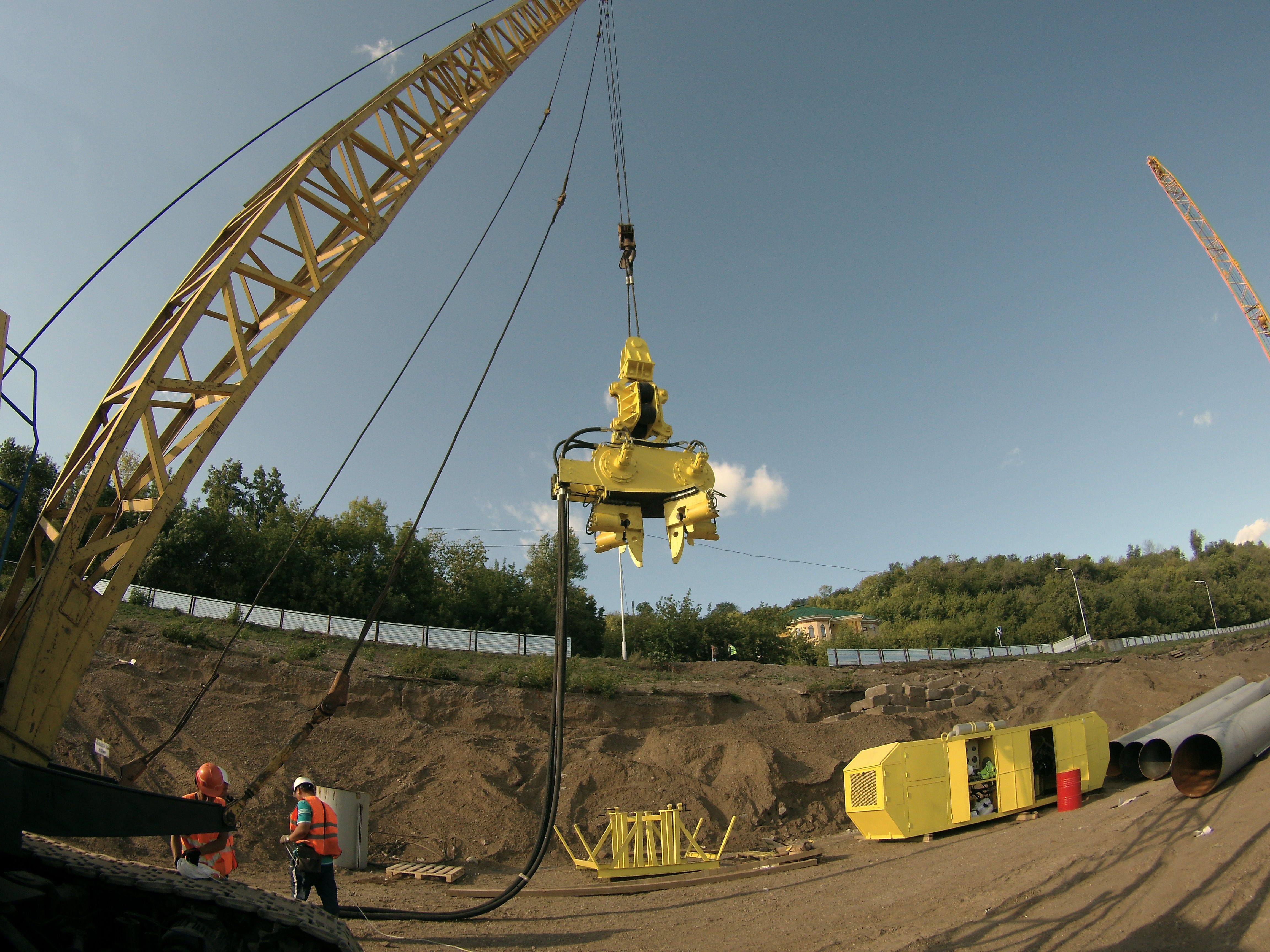Key Environmental Concerns in Pile Driving
1. Noise Pollution
High-decibel impact hammers can disturb communities, especially in urban zones, and pose serious risks to aquatic life due to intense underwater acoustics.
2. Vibration Transmission
Ground vibrations can damage nearby structures, disrupt sensitive ecosystems, and compromise archaeological or historic sites.
3. Water & Soil Contamination
Marine pile driving can stir up sediments, releasing toxins or silt into water bodies. In land-based settings, hydraulic leaks or fuel spills can pollute soil and groundwater.
4. Air Emissions
Traditional diesel-powered pile drivers emit greenhouse gases, particulates, and NOx pollutants, contributing to air quality concerns on-site and nearby.
Best Practices to Reduce Environmental Impact
Use Vibratory Hammers Over Impact Hammers
- Vibratory hammers generate less noise and cause fewer vibrations.
- Ideal for non-cohesive soils and shorter pile installations.
- Beneficial in urban environments and marine habitats.
Deploy Bubble Curtains in Marine Installations
- Bubble curtains create a ring of air bubbles that absorb and scatter sound waves.
- Essential when working near marine mammals or fisheries.
- Frequently required by environmental agencies during underwater piling.
Apply Pre-Drilling & Soft-Start Techniques
- Pre-drilling reduces required hammer force, cutting down noise and vibration.
- Soft-start gradually increases energy, giving wildlife time to leave the area.
Smart Scheduling and Noise Barriers
- Restrict operations to daylight hours to comply with local noise ordinances.
- Use temporary noise barriers and enclosures around active machinery.
- Schedule operations to avoid sensitive breeding or migration seasons.
Maintain Equipment Regularly
- Tune engines to reduce unnecessary noise and emissions.
- Regularly inspect hydraulic systems for leaks or wear.
- Use biodegradable hydraulic oils in marine environments.
Innovations in Eco-Friendly Pile Driving
Electric and Solar-Powered Pile Drivers
- Reduce carbon footprint and operating noise.
- Ideal for environmentally sensitive or off-grid areas.
Real-Time Noise and Vibration Monitoring
- IoT-enabled sensors detect and log acoustic/vibration thresholds.
- Provides instant feedback for adaptive construction responses.
Smart Piling Systems
- Auto-adjusting equipment ensures optimized driving force.
- Minimizes overdriving and unnecessary disturbance.
Compliance and Permitting Considerations
- Federal and State Regulations: EPA, NOAA, and local municipalities enforce limits on construction noise and water impacts.
- Monitoring Requirements: Projects may require baseline studies, on-site acoustic readings, and post-project reporting.
- Permitting Agencies: Include U.S. Army Corps of Engineers, State Environmental Agencies, and local land use authorities.
Working with environmental consultants early in the project lifecycle ensures proper documentation, permitting, and mitigation strategies.
Conclusion
Environmental stewardship in pile driving is no longer optional—it’s a critical aspect of responsible construction. Adopting low-impact equipment, smart planning, and innovative technologies helps reduce environmental risks while ensuring regulatory compliance and public trust.
For high-performance, environmentally conscious pile driving solutions, PileDrivingUSA is your partner in building a better future—one foundation at a time.




